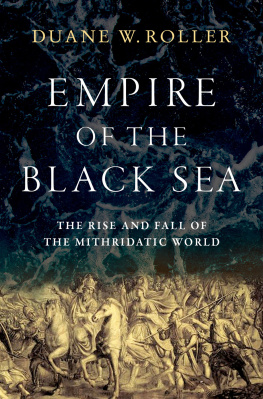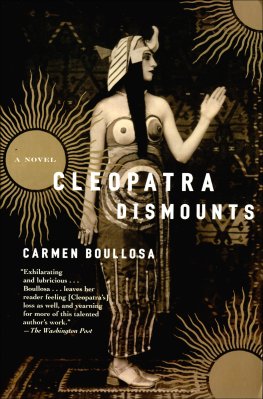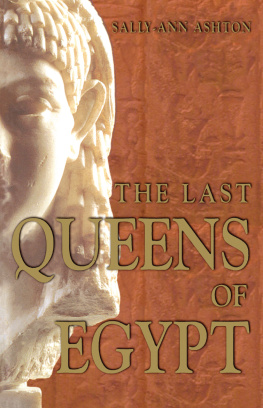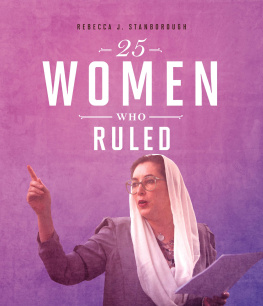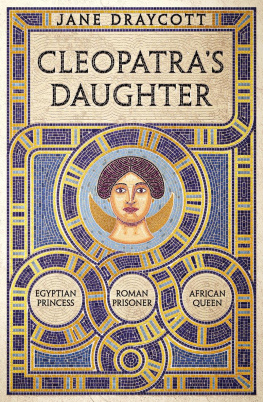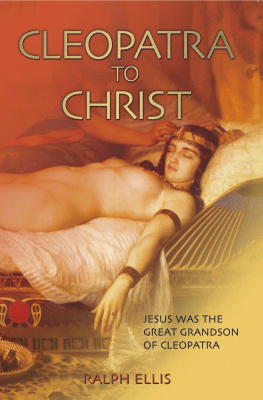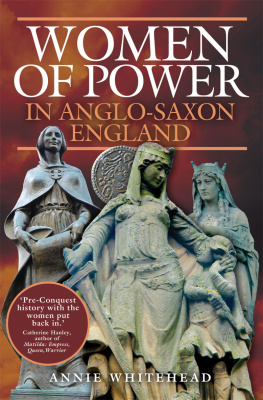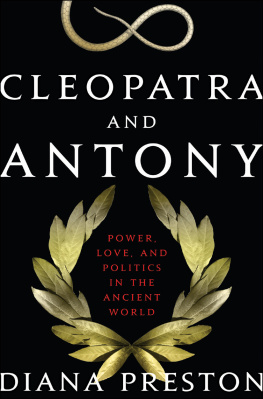CLEOPATRAS DAUGHTER
WOMEN IN ANTIQUITY
Series Editors: Ronnie Ancona and Sarah B. Pomeroy
This book series provides compact and accessible introductions to the life and historical times of women from the ancient world. Approaching ancient history and culture broadly, the series selects figures from the earliest of times to late antiquity.
Cleopatra
A Biography
Duane W. Roller
Clodia Metelli
The Tribunes Sister
Marilyn B. Skinner
Galla Placidia
The Last Roman Empress
Hagith Sivan
Arsino of Egypt and Macedon
A Royal Life
Elizabeth Donnelly Carney
Berenice II and the Golden Age of Ptolemaic Egypt
Dee L. Clayman
Faustina I and II
Imperial Women of the Golden Age
Barbara M. Levick
Turia
A Roman Womans Civil War
Josiah Osgood
Theodora
Actress, Empress, Saint
David Potter
Hypatia
The Life and Legend of an Ancient Philosopher
Edward Watts
Boudica
Warrior Woman of Roman Britain
Caitlin C. Gillespie
Sabina Augusta
An Imperial Journey
T. Corey Brennan
Cleopatras Daughter
and Other Royal Women of the Augustan Era
Duane W. Roller

Oxford University Press is a department of the University of Oxford. It furthers the Universitys objective of excellence in research, scholarship, and education by publishing worldwide. Oxford is a registered trade mark of Oxford University Press in the UK and certain other countries.
Published in the United States of America by Oxford University Press
198 Madison Avenue, New York, NY 10016, United States of America.
Oxford University Press 2018
All rights reserved. No part of this publication may be reproduced, stored in a retrieval system, or transmitted, in any form or by any means, without the prior permission in writing of Oxford University Press, or as expressly permitted by law, by license, or under terms agreed with the appropriate reproduction rights organization. Inquiries concerning reproduction outside the scope of the above should be sent to the Rights Department, Oxford University Press, at the address above.
You must not circulate this work in any other form and you must impose this same condition on any acquirer.
CIP data is on file at the Library of Congress
ISBN 9780190618827
eISBN 9780190618841
Contents
Maps
Figures
By the last third of the first century BC, the Roman Empire had come to rule much of the Mediterranean world. Yet various regions, especially in the East, were still under the control of indigenous royalty, which existed in a symbiotic relationship with the Roman government. Even though royalty might have seemed an anachronism in the new Roman world, the kings and queens ruled large territories and wielded great power. Inevitably, studies of this period have focused on the kingspersonalities such as Herod the Great and Juba II of Mauretaniaand have paid little attention to the queens, whether as companions to their husbands or as independent monarchs in their own right. But they were also an essential part of the contemporary political environment.
This volume examines in detail several royal women of the era of Augustus (ruled 27 BCad 14), all of whom were powerful leaders. Emphasis is on Cleopatra Selene of Mauretania (40-5 BC), Glaphyra of Cappadocia (ca. 35 BCad 7), Salome of Judaea (ca. 57 BCad 10), Dynamis of Bosporos (ca. 63 BCad 7), and Pythodoris of Pontos (ca. 35 BCad 33). They were contemporaries, were related through marriage to one another, and were closely allied with the imperial family in Rome and its own women, such as Livia and the younger Antonia, who themselves took on many of the characteristics of Hellenistic queens. The most famous was Cleopatra Selene, the daughter of Cleopatra VII and the triumvir Marcus Antonius (Mark Antony), but the others were also of great importance in their own territories. Some ruled alone, and others were important partners of their husbands. They wielded power within their environments and beyond. In modern diction they are called queens (with the exception of Salome), an inadequate translation of the Greek words basileia and basilissa. Their role models went back to the heroic age as well as various prototypes from the late Classical and Hellenistic periods, and the concept of queen had developed as an important royal dynamic in the generations before the accession of Augustus, in 27 BC.
In the evolving world of the Augustan period, these women were major players in the relationships between the diverse populations of the new Roman Empire and its central government. One (and perhaps another) was a descendant of Antonius, who was also personally involved in the destiny of the others or their families: thus the queens represent an element of the survival of his ambitions in the Augustan world, even though he was a member of the discredited older Roman regime. The women could offer greater political stability and status than their husbands, who might be subject to sudden death while on campaign, and their closeness to the imperial family provided precedents for the role of Roman aristocratic women. Cleopatra Selene was a cousin of members of the ruling Julio-Claudian family and was thus related to three Roman emperors. Others had personal contact with the imperial elite in Rome. Cleopatra Selene and Pythodoris were patronesses of intellectual culture and implemented the work of major scholars. And the descendants of the queens held royal power on the borders of the Roman Empire for generations thereafter.
This contribution to the Women in Antiquity series relies on the authors long acquaintance with the world of the queens, the transitional years from the Hellenistic kingdoms to the Roman Empire. An essential part of this era was the concept of the friendly and allied monarch, the indigenous ruler at the margins of Roman territory who functioned in close alliance with the Roman state, balancing the needs of his or her people with the global requirements of Roman policy. Previous treatments of Cleopatra Selenes mother and husband, Cleopatra VII and Juba II (who was also a husband of Glaphyra), as well as Salomes brother Herod the Great, all in their own way friendly and allied monarchs, have set the stage for this study of the queens. Needless to say, there have also been visits by the author, insofar as possible, to their territories and capitals.
Most of all, the author would like to thank Sarah Pomeroy and Ronnie Ancona not only for their editorial advice but for their faith in entrusting to him another volume of the Women in Antiquity series. As before, the author wrote the book in his study in Santa Fe, having conducted research at the Harvard College Library and the library of the University of California at Berkeley, and utilized the excellent interlibrary loan services of the Ohio State University library. Financial support was provided by the Emeritus Academy of the Ohio State University. Among the many who assisted in the completion of this work, the author would especially like to thank Sally-Ann Ashton, Stanley M. Burstein, Bridget Buxton, Carolin Hahnemann, Molly Ayn Jones-Lewis, Diana E. E. Kleiner, Kyra Nourse, Josiah W. Osgood, John Pollini, Letitia K. Roller, Eugenia Equini Schneider, Stefan Vranka and many others at Oxford University Press, and Wendy Watkins and the Center for Epigraphical and Paleographical Studies of the Ohio State University.


